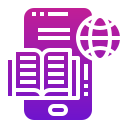Future Trends in Online Education Platforms
Chosen theme: Future Trends in Online Education Platforms. Explore how technology, pedagogy, and community are converging to shape the next decade of learning. Stay curious, share your perspective, and subscribe for more forward-looking insights.

AI-Powered Personalization Becomes the Default
Expect courses that evolve as you progress, recommending readings when you struggle and projects when you’re ready. One student told us their AI-tuned path reduced overwhelm and restored confidence within two focused weeks.
AI-Powered Personalization Becomes the Default
AI copilots will nudge reflection, explain concepts in multiple ways, and suggest practice targeted to misconceptions. Equally vital are guardrails that cite sources, show reasoning steps, and discourage shortcuts that undermine genuine understanding.
Microlearning and Stackable Credentials
Bite-sized lessons, big outcomes
Five to ten minute learning bursts fit real life and reduce cognitive overload. When Maya shifted to microlearning for data skills, she completed more material in less time and retained core techniques during a difficult job transition.

Imagine calibrating a jet engine or performing a sterile technique in a virtual environment before the first real attempt. One community college cohort reported fewer errors after XR rehearsals, crediting repetition without fear of costly mistakes.
Immersive and Hands-on: AR/VR/XR Labs

Learners persist when they feel seen. In one pilot, a weekly peer check-in cut dropout rates by half, while shared wins—like publishing a team capstone—sparked pride that no quiz score could match.

Expect seamless blends of async forums and purposeful live sessions with thoughtful facilitation. Tools will surface shy voices, summarize threads, and support time-zone fairness so everyone contributes meaningfully without burning out.

How has a cohort or study group changed your learning? Drop a note below, tag a peer who helped you grow, and subscribe to join upcoming community-led workshops and office hours.
Assessment Reimagined with Learning Analytics
Think process portfolios, reflective prompts, and real-world deliverables judged by rubrics and peers. One design course replaced a final exam with a client project, and hiring managers praised the tangible evidence of problem-solving.




